If you’re a content marketer, you have one job: to create content that wins people’s hearts and minds—and turns them into lifelong supporters of your brand. It isn’t easy, especially when you need to create quality content consistently (and within budget), but it’s a whole lot easier if you have a blueprint to keep you aligned with your long-term goals. This is why all good content marketing starts with a good content strategy. It’s also why so many content marketers struggle.
56% of marketers do NOT have a documented content strategy.
—Content Marketing Institute’s 2023 Enterprise Marketing Report
That means the majority of marketers are working off of some vague strategy—or winging it entirely. Either way, this lack of planning shows in brands whose content isn’t cohesive, whose ideas don’t resonate, and who struggle to gain footing. Why, then, do so many marketers keep flying blind? Because creating a content strategy can be intimidating—and there are plenty of excuses to keep you from doing it.
- You’re too busy shipping this week’s content.
- You’re too focused on next month’s product launch.
- It’s too late in the quarter.
- You just don’t have the resources or knowledge to do it correctly.
We get it. But, ultimately, crafting a content strategy is some of—if not the—most important work you can do, no matter how big or small your brand is. And, hey, you don’t have to do it alone.
We’ve helped brands of all sizes, across all industries, craft the content strategies they need to connect with their audiences and move people along the path to purchase. Along the way, we’ve learned what makes a bad content strategy, what makes a good one, and what makes a freaking great one. And now, we’re ready to pass that knowledge on to you.

Here, you’ll find a step-by-step guide containing our best tips, tricks, tools, and templates to create a strong content strategy that will set you up for success. If you’re undertaking this work for the first time (or looking to revise your current strategy), we hope this guide will give you the confidence you need to get your content on the right track. Ready? Let’s go.
What Is a Content Strategy?
It’s pretty simple. A content strategy is a documented plan that outlines your content marketing goals and helps you identify the stories and experiences that will help you achieve them.
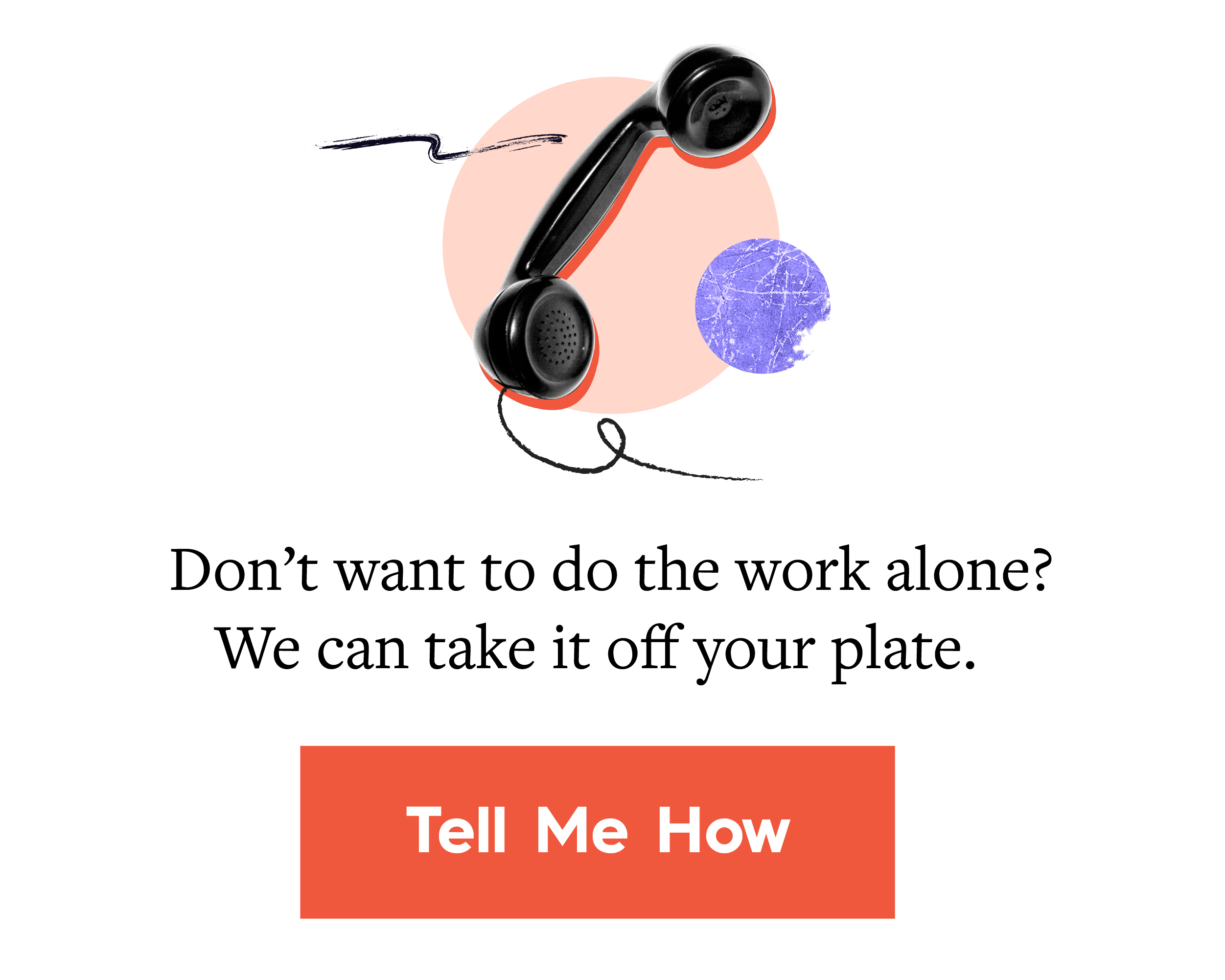
Why Do You Need a Content Strategy?
That’s pretty simple too. Without a content strategy, you’re basically taking shots in the dark, creating piecemeal content that isn’t as effective as it should be, and working off of hunches instead of solid data. At the end of your campaign, quarter, and annual cycles, you can’t even evaluate your success because you never had a strategy to begin with.
Conversely, with a well-crafted strategy you can…
- Make better decisions. Being able to actually “see” your strategy lets you spot potential issues, trim the fat, and visualize your entire content ecosystem. It also allows you to record hypotheses and assess them once you have your results.
- Keep everyone on the same page. Communication is more efficient with a documented content strategy. It helps everyone working on your content—both internally and externally—know exactly what they’re doing, why they’re doing it, how they’re doing it, and why it matters. This empowers your team to take more ownership, contribute better ideas, hesitate less, and produce better work.
- Stay accountable. With a content strategy, you can test your ideas, plan and schedule deliverables, measure and monitor results, and maintain momentum in a tangible way.
- Improve your resource and budget allocation. This is one of the biggest benefits of a documented content strategy. You can plan well ahead of time and determine the best way to get the most value from your resources. It can also help you keep a handle on your budget—or justify the need for more budget.
In short, with a content strategy, you can work with more clarity and less craziness.
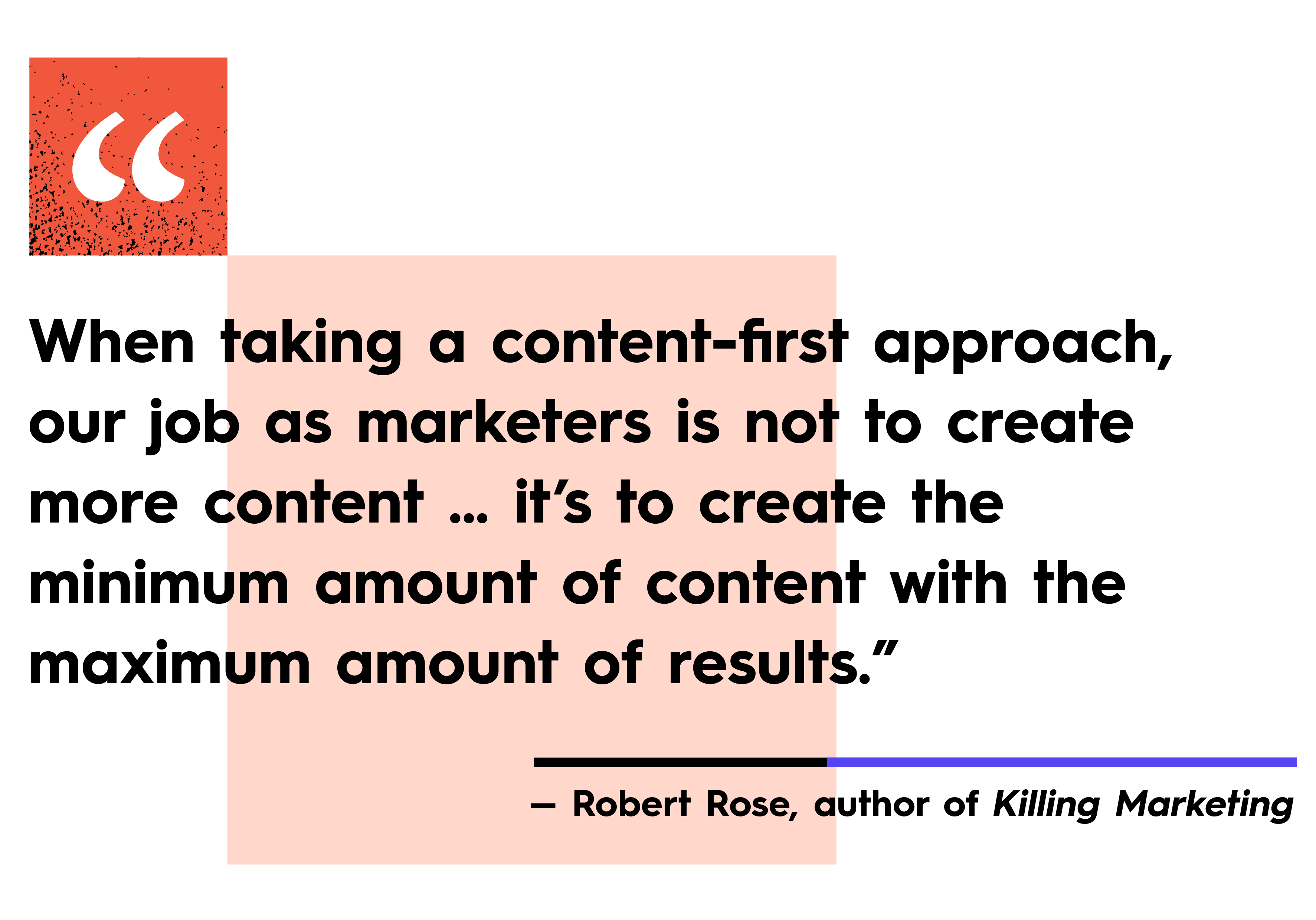
What Makes a Good Content Strategy?
Just because you have a content strategy on paper doesn’t mean it will help your brand. There are plenty of content marketers who have a content strategy yet struggle to a) bring it to fruition or b) see actual results.
If you want your content strategy to succeed, make sure it’s…
- Tailored to your goals. The only thing worse than having no content strategy is having one that isn’t aligned to your larger goals. When that happens, your strategy will be ineffective at best and counterproductive at worst. The best strategies use every element of content marketing in service of the larger goal.
- Comprehensive. The whole point of content marketing is to create a relationship with people through consistent, quality content. But it takes a lot of moving parts to make good content happen on a regular basis. A good strategy is built to keep your editorial calendar full of fresh, interesting ideas—with the infrastructure in place to bring them to life.
- Flexible. Your strategy is a blueprint, but it isn’t set in stone. If something unexpected happens, or you realize things aren’t working the way they should, you should be able to adapt as necessary.
Remember: The best content strategy is built for your brand, crafted around your capabilities, and designed to help you tell the best stories possible.
What Does a Content Strategy Include?
We break the content strategy process into three main phases: Discovery, Planning, and Creative, with specific tasks assigned to each.
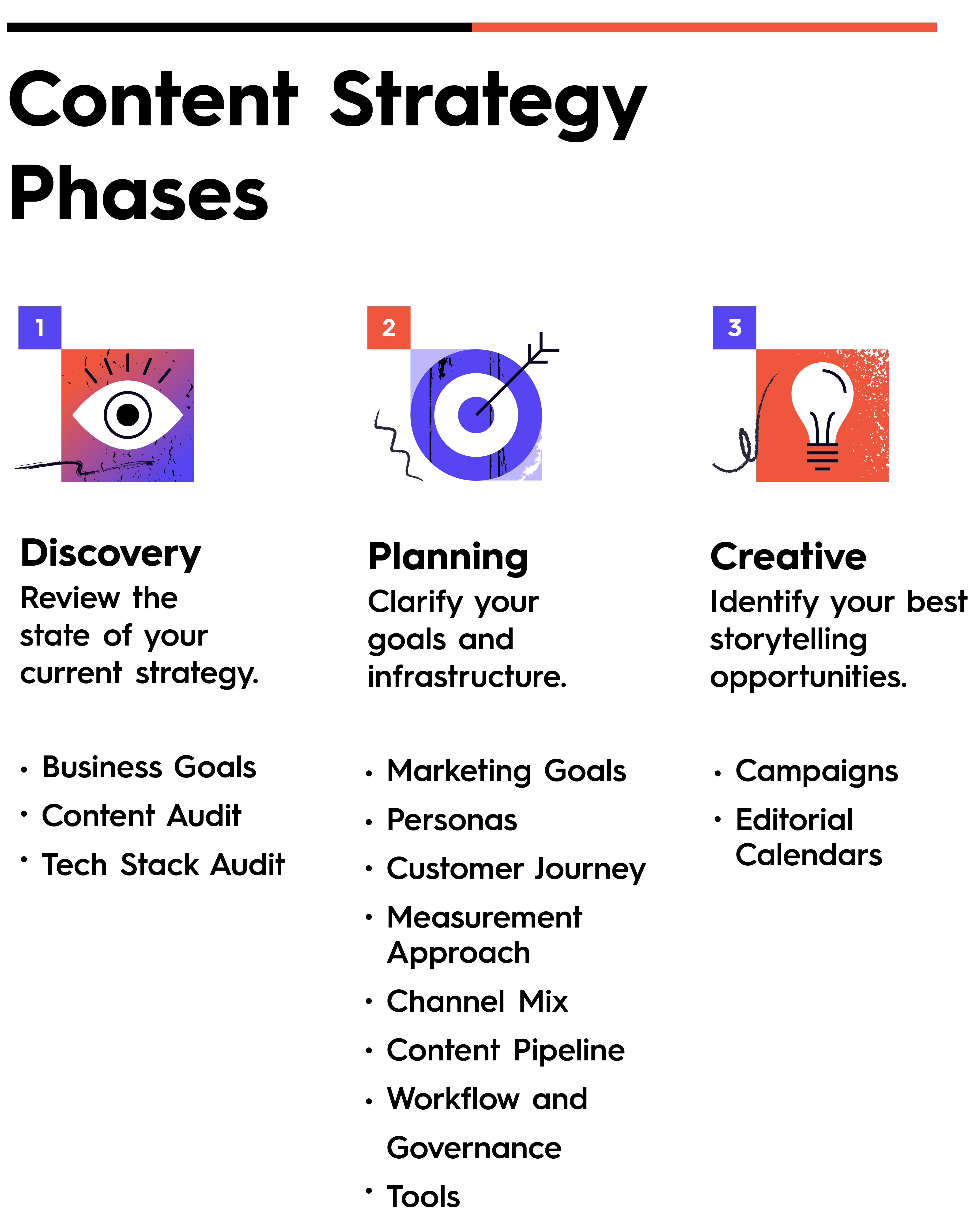
Tackling your strategy in this order lets you build a totally aligned strategy, from your high-level goals to your final execution.
How to Create a Content Strategy
It takes time, focus, and energy to document your strategy, but don’t get overwhelmed. It’s a little effort with a huge reward. Again, we’ve seen brands make every content strategy mistake in the book (and made a few ourselves), so we know what works and what to avoid.
What we’ve outlined here are the basic steps that any brand can follow to create a solid but flexible content strategy. This process will guide you through three distinct phases, covering both the high-level thinking and practical/tactical elements to consider for each. At the end, you should have a strong and actionable plan you can hit the ground running with.
That said, we know that each brand has unique needs, so you can adapt this framework accordingly. You may even have some of these components documented already, which is fine if they are up to date, but it’s still important to follow the process in sequential order. This ensures that every aspect of your strategy is aligned and optimized to get you the best results possible.
Before you start, download our free Content Strategy toolkit, which includes the templates you need to work through this process.

Note: Make sure you have the right stakeholders involved from the beginning—and that you get their approval at every phase. Keep in mind that there are many other people involved in the execution of your content strategy as well, including your sales team, technical wizards (Web & CRM), designers, copywriters, etc. While not everyone may need to be involved in every meeting for content strategy, consider how your strategy decisions will affect your team.
Phase 1: Discovery
Before you start planning for the future, you need to hit the pause button, take a step back, and reassess what you’re currently doing and why.
Step 1: Review Your Business Goals
Purpose: Review your high-level goals to ensure you create a content strategy that helps you achieve them.
When a content strategy doesn’t work, it’s usually because it’s misaligned to a company’s larger goals. Thus, step one is going back to the basics: who you are, where you play, how you compete, and what you’re trying to achieve. You may think you already know this information, but it’s always helpful to revisit it with fresh eyes.
How to Do It
Review any documentation related to your business strategy.
- What are your business goals?
- What’s your position in the marketplace?
- Who is your competition?
Note: Understanding your competition is especially important to help you differentiate through content. When you can identify messaging gaps in your industry, and then fill those gaps (or communicate more effectively than your competition), you’ll create the strongest connections with your target personas. (Find out how to complete a competitive analysis if you need to refine your competitive landscape.)
At this stage, you will also want to review the core elements of your brand strategy, which includes your:
- Brand Heart (purpose, vision, mission, values)
- Brand Messaging (tagline, value prop, messaging pillars, etc.)
- Visual Identity (logo, colors, typography, etc.)
All three elements must be reflected in your content strategy if you want to tell stories that effectively communicate who you are. (If you haven’t documented these elements, follow our Guide to Create a Brand Strategy.)

Step 2: Do a Content Audit
Purpose: Identify what your content ecosystem currently looks like, what’s missing, and how you can improve.
A good content strategy is comprehensive, cohesive, and intentional. That means every piece is made for a specific reason and tied to a specific goal. The problem is that most teams worry about quantity over quality, focusing on hitting their day-to-day deadlines more than making a real impact.
This tunnel vision results in content marketing that’s inconsistent, imbalanced, and ultimately ineffective. The first step to remedy this is to take a holistic look at your content with a proper content audit. By looking at the type of content you’re creating, what messages you are or aren’t sending, what’s working, and what isn’t, you get the insights you need to build a cohesive strategy and tell stories that really connect with people.

How to Do It
To conduct a proper audit, you’ll be reviewing a sample of the content you (and your competitors) put out into the world. In general, that content tends to fall into five main categories.
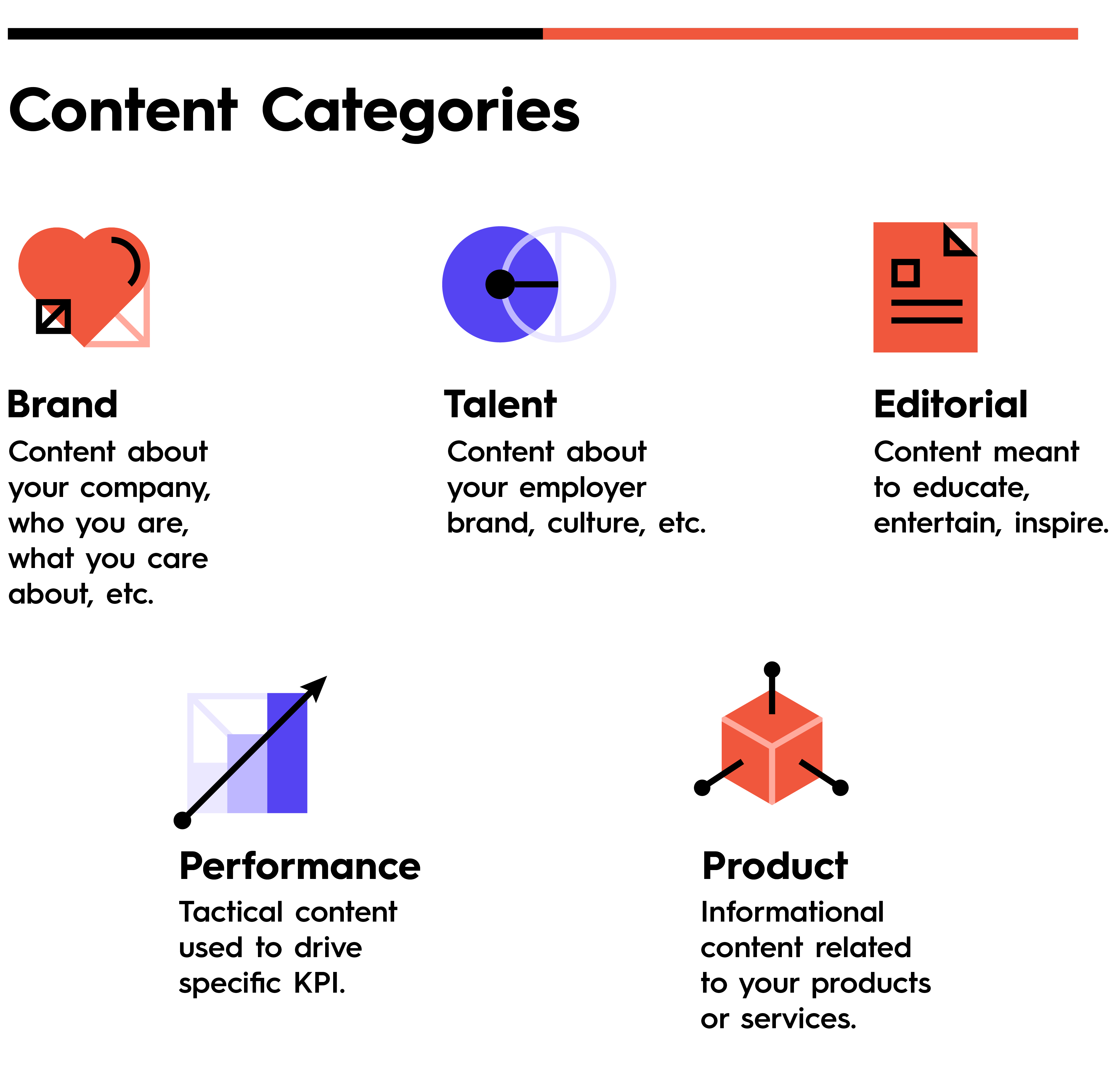
To complete this step, use the Content Audit Template and see our Guide to Conduct a Content Audit.
Step 3: Review Your Tech Stack
Purpose: Get a snapshot of the tools, technology, and resources you currently use.
Your content marketing operation can be complex, requiring many tools and a solid digital infrastructure. These tools can be very helpful, but they can also be redundant. It’s important to audit your existing tech stack before you build your new strategy for several reasons.
- You may find opportunities to cut costs or consolidate (e.g., you’re paying for something you’re not using, or using one thing for a task that can be performed by something else).
- You can identify ownership, track subscription status, etc. to ensure your team always has what it needs.
- You can identify things you will need (e.g., if you plan to create more videos in the future, you’ll need editing software).
Additionally, now that AI has arrived on the scene, there are more and more tools to help you tackle just about every part of marketing, including:
- Customer Segmentation and Targeting
- Personalization
- Chatbots and Virtual Assistants
- Predictive Analytics
- Marketing Research
- Brainstorming
- Content Creation and Optimization
- Design
- Email Marketing Automation
- Social Media Management
- Search Engine Optimization (SEO)
- Ad Targeting and Optimization
- Customer Relationship Management (CRM)
- Voice Search Optimization
- A/B Testing and Optimization
- Fraud Detection and Security
- Competitor Analysis
- Augmented Reality (AR) and Virtual Reality (VR)
You may want to consider adopting new tools—or research the new AI capabilities your existing tools may have integrated (as many are constantly updating their offerings). This doesn’t mean that these tools have to replace you, but they can help drastically improve your productivity, reduce menial labor, and help your team work more efficiently.
37% of marketers say they aren’t using their technology to its full potential.
—Content Marketing Institute’s 2023 Enterprise Marketing Report
How to Do It
Use the Tool & Tech Stack Template to list the technologies and tools you use to create, host, and distribute your content across channels. This includes things like your…
- Website and web analytics
- Content scheduling and publishing platforms
- Blog
- Social media platforms and tools
- Content Management System
- Proprietary data collection and storage
- Social listening tools
- Audience profiling tools
- SEO tools
- Design and charting tools
- Marketing automation
- Email marketing
- Customer relationship management software
- Paid media platforms and software
- Landing page builder
Note: Depending on the tools you use, some of these may overlap.
Questions to Ask
- Do your tools cover your needs?
- Do you have duplicative tools that can be consolidated?
- Does everything function properly? (Look out for zombie subscription charges from past employees, vendors, etc.)
- Do you have a good user experience?
- Is automation working correctly?
- Do all the people who need access to platforms have it, and not more than necessary?
- Does every platform have someone in the organization who’s proficient in using it?
Remember: Supporting your team’s needs is vital to executing your content strategy. That said, although some tools can help you work more efficiently, we know it can be overwhelming to adopt multiple at once. In that case, we recommend having specific people or teams test and experiment with new tools, then share their findings to see if they can benefit the whole team.
Phase 2: Planning
Now is the time for you to examine your content marketing ecosystem and document how you will approach each element. You’ll be detailing the who, what, when, where, and how of your content operation. This will ensure you’re equipped to execute the content strategy and use your resources as efficiently as possible.
Not only will this work make your content more successful but it will make it easier to collaborate with content creators outside your organization, such as a content agency.
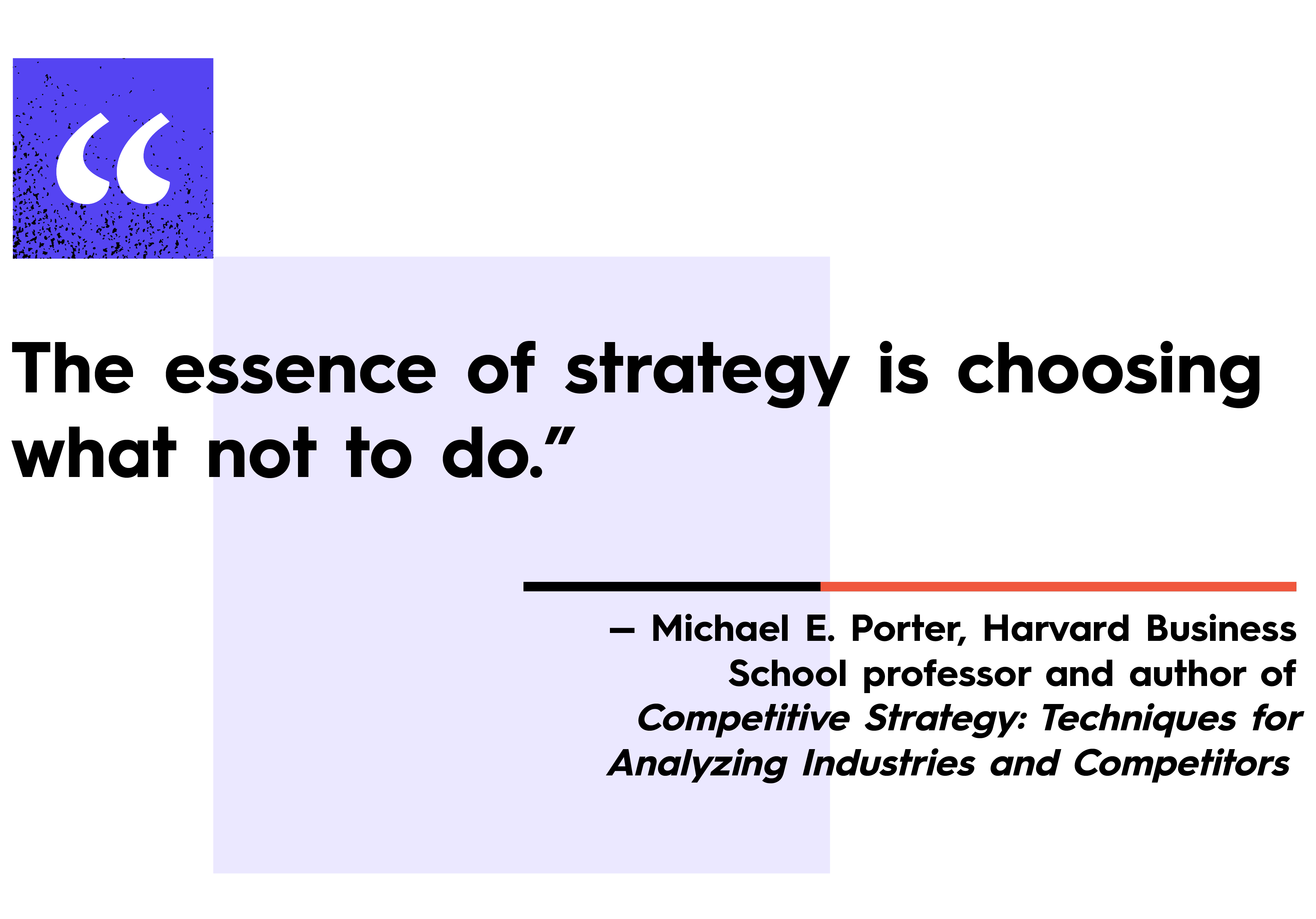
Step 4: Document Your Content Strategy Goals
Purpose: Define measurable goals that keep your team accountable.
Your entire content strategy exists to help you achieve your goals. Naturally, you need to clearly articulate what those are—and make sure everyone on your team understands what they are too. This is especially important; every decision your team makes about content, from copywriting, to design, to distribution, will be influenced by these goals.
We often find that weak strategies can be traced back to weak goals that are either too vague or too broad. To be successful, you need clear goals that you can measure.
How to Do It
In this step, you’ll document three things:
- Content strategy statement to explain the big picture of what you’re trying to do.
- Objectives that clearly define your content strategy goals.
- Key Results that help you measure your objectives.
To work through these exercises, use our Content Strategy Goals Template. This document will help you summarize your entire strategy succinctly so that everyone understands what you’re trying to do. (You cannot proceed until you have these goals articulated and agreed upon.) It will also act as your North Star, guiding your decisions and keeping your team aligned in every way. For more details, see our guide to document your marketing goals.

Questions to Ask
- What discrete task do you want content to accomplish? How does that break down into objectives and key results?
- Which objectives take priority?
- What other important considerations will influence how you approach your goals/solutions?
- How will you define vital elements, such as a lead?
- How do your content marketing goals support your larger business goals?
Your goals are truly the foundation of your entire content strategy. Take the time to get them right.
Step 5: Identify Your Personas
Purpose: Understand who your audience is, what they’re interested in, and how you can serve their needs.
To create compelling content, you need to know who you’re trying to connect with, and how your content can best serve them.
- What do they care about?
- What motivates them?
- What problems do they need solved?
- What would make their lives easier?
By identifying your audience’s demographic/psychographic traits and distilling them into unique personas, you can better understand each group’s unique needs and come up with content ideas that will really resonate with them.

How to Do It
It’s smart to start with 3-5 distinct and detailed personas. Use the Personas Template, and follow the step-by-step details in our Guide to Create Personas.
Step 6: Map Your Customer Journey
Purpose: Identify what people need to hear at each stage to make sure your messaging is consistent and effective.
You need to deliver the right message, in the right place, at the right time so that you can move people along the customer journey. Thus, it’s important to map your customer journey from start to finish.
Having completed your content audit, you will probably already have spotted some gaps in your messaging. But revisiting your journey will help you ensure that you are telling people what they want to hear at every stage.
62% of marketers struggle to create content that appeals to different stages of the buyer’s journey.
—Content Marketing Institute’s 2023 Enterprise Marketing Report
How to Do It
Use our Customer Journey Template, and follow our Guide to Map Your Customer Journey.
Questions to Ask
- How will prospects and customers be nudged along the journey?
- What signals help identify someone in a particular stage of the journey?
- Where in the journey will your strategy focus?
- At what point will you bring in the sales team to close the deal?
The more seamless your customer journey is, the more effective you’ll be.
Step 7: Determine Your Measurement Approach
Purpose: Identify the Key Performance Indicators that will help you quantitatively measure your success.
Your content strategy is worthless without a way to measure your success. The better you measure, the more you can test, tweak, and readjust your approach. Thus, knowing your success metrics for each stage of the customer journey is crucial.
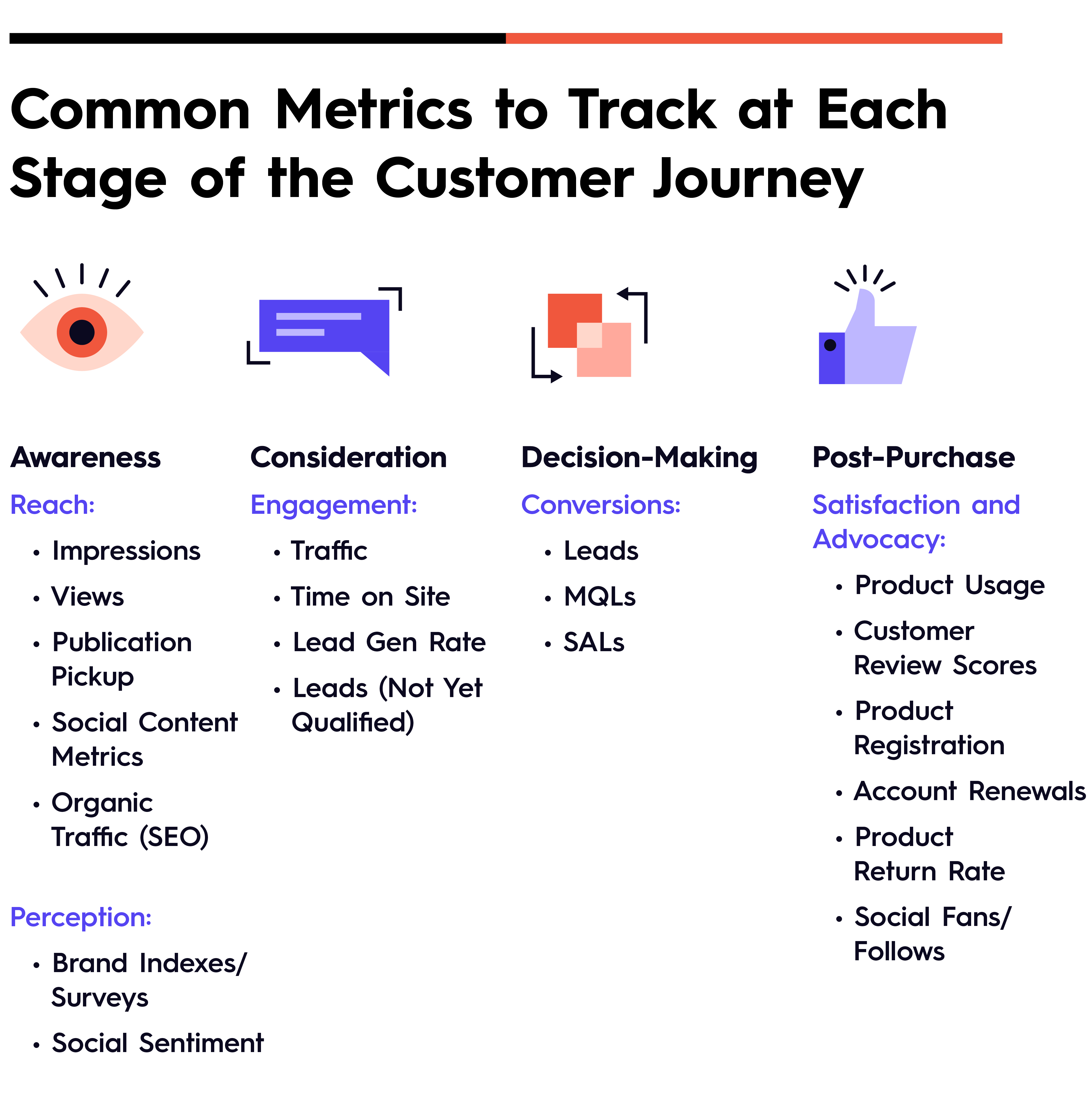
How to Do It
You want to get a strong sense of how your content strategy is performing, but you don’t have to track and measure every single metric. To figure out what to measure, refer to your OKRs. Which available metrics are relevant to your key results? Those are the Key Performance Indicators (KPI) that will help you identify if you are moving the needle on your objectives. Additional metrics can also provide helpful insight, but KPI matter most.

Questions to Ask
- Which available metrics are your KPI?
- How are they mapped to your objectives and key results?
- What does each KPI say about the success of your campaign or strategy?
- What are the benchmarks for your industry?
- Should you be comparing your KPI to those, or should you focus on historical data from your company’s performance?
For more tips, see our Guide to Use Metrics in Your Content Strategy.
Step 8: Choose Your Channel Mix
Purpose: Identify what channels will help you reach your personas.
Your content can only work if it gets in front of the right people, but with so many options it’s hard to know what will help you make the most impact. There’s a lot that goes into your decision-making here, which is why having very clear goals is so important.
How to Do It
To choose the best channel mix for your content strategy goals…
- Think about your personas. Think about where they spend the most time, which publications they read, which social platforms they use, what times they’re most active, etc.
- Remember your OKRs. You’ve set your objectives and key results as a form of guidance throughout your strategy work. If your primary objective is around building a pipeline of leads, what channels are best suited to help you do that?
- Think about your content formats. Different types of content are better suited for different channels. If video tutorials are a big part of your content mix, consider how that may influence the channels you target.
- Prepare your media buys. How will you distribute across your earned, owned, and paid channels? This may include anything from internal emails, to out-of-home buys, to influencer outreach. These are important to budget in terms of cost and lead time.
Questions to Ask
- How are you going to reach people (owned, earned, paid)?
- What channels will help you meet your determined OKRs?
- What media mix will be most effective?
- How can you leverage new channels, more channels, or use your existing channels differently?
For more tips to help your content get maximum exposure, see our Guide to Choosing Your Distribution Channels, and see our steps to build a solid distribution strategy.
Step 9: Create Your Content Pipeline
Purpose: Get a high-level view of your content priorities and opportunities.
Now that you know what you’re trying to do, who you’re trying to reach, and how you’re going to reach them, it’s time to bring your strategy to life. However, before you plan what exact content you’ll make, you need to identify the major goals, milestones, and events you will need to build content around for your next year, based on your OKRs. This helps you plan ahead, anticipate your needs, allocate resources, and work more effectively.
How to Do It
Remember: A good content strategy is solid enough to guide you but flexible enough to adapt if things change. Use our Content Pipeline Template to build out a year-long view, with important elements broken down by quarter, such as:
- Business Milestones
- Product Launches
- Priorities
- Major events/relevant holidays (e.g., annual tradeshow or Hanukkah)
This way you know your biggest priorities are accounted for as you plan your upcoming content, but you can still shift things around if you need to.

Step 10: Assign Workflow & Governance
Purpose: Clarify roles and responsibilities to make sure your team functions as efficiently as possible.
If you’re working with a large budget, you may have a department full of people to help execute your content strategy. If you’re working for a scrappy startup, it might be you and a few freelancers. The good news is the size of your team doesn’t matter.
To create good content, you just need a team that is aligned, organized, and focused on the same goal. (This is especially true if you’re working with outside vendors.) Everyone needs to understand the workflow and who’s responsible for what. As long as you’re covering all the right content marketing roles, you’ll be surprised by how much you can get done with a little coordination up top.
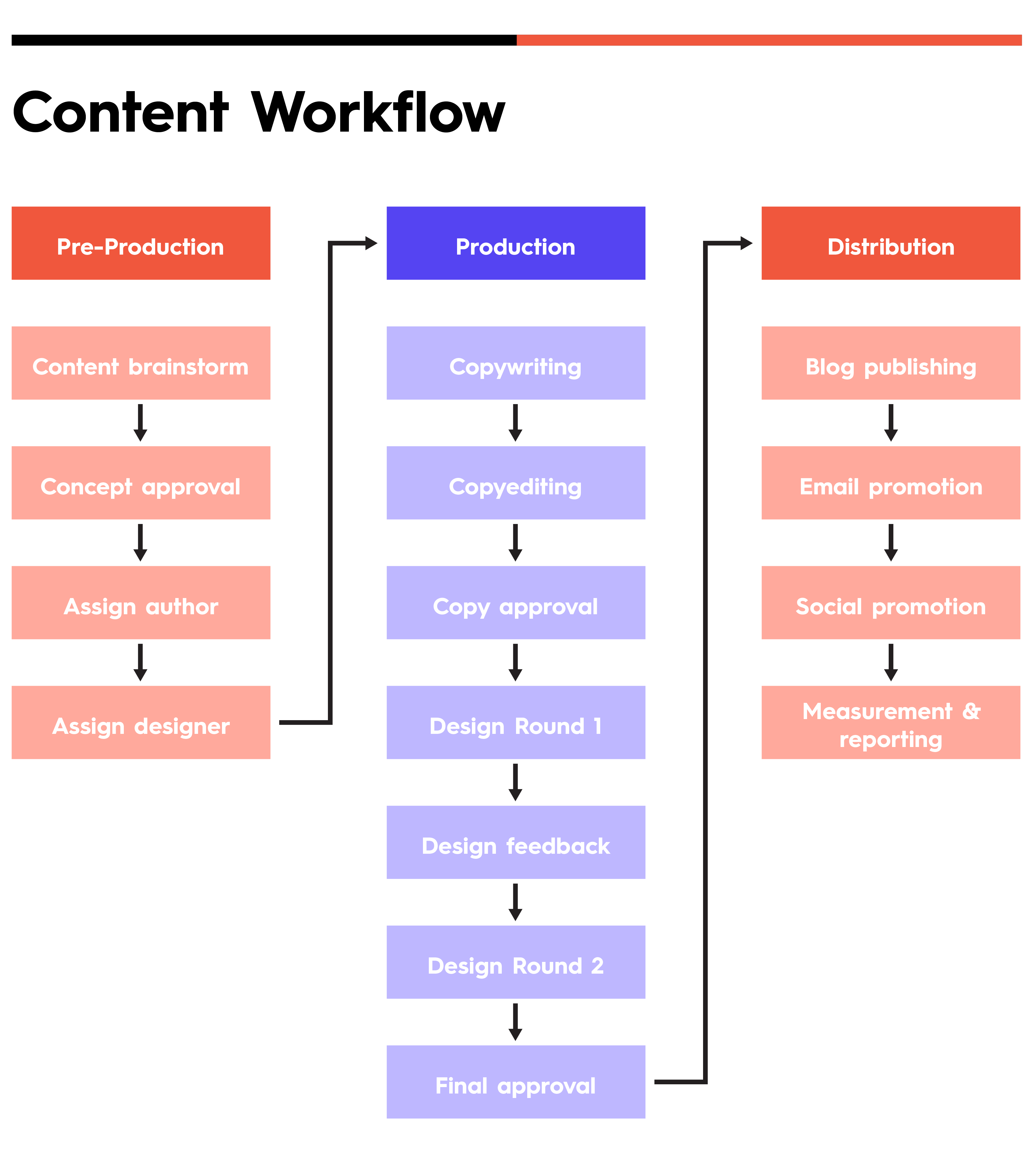
How to Do It
At this stage, you want to assign roles and responsibilities to your team to both empower people to have ownership over their work—and make sure that everyone is working together effectively. For example, if your PR team wants to be involved in brainstorms to steer you toward the most promotable content ideas, you’ll want to make sure they’re in the loop from the jump.
Use the Workflow & Governance Template to identify who will be involved at every stage of content creation and what role they’ll play. This includes both your internal team and external (if you’re working with a freelancer or content agency).
Questions to Ask
- Who is involved in these efforts?
- What responsibilities does each person have?
- How are people meant to work together?
- Who owns the project?
- Who decides who handles new initiatives?
- What stakeholders need to approve/review initiatives?
Naturally, the more people who are involved, the more likely things will slip through the cracks—especially if you’re working with an outside team. To make sure that doesn’t happen, here are 7 tips to keep everyone inside and outside your company aligned.
Step 11: Know Your Tools
Purpose: Equip your team with the tools they need to do their job—and get the most out of those tools.
Content marketing takes work, but it can be a whole lot easier if you have the right tools. If you’ve done a thorough discovery, you probably already have an idea of what tools you want to ditch or what tools you want to experiment with. Remember that different types of content may require different types of tools. If you plan to experiment with something new—say, interactive infographics—you need the capability to execute it.
How to Do It
Luckily, there are so many resources to make marketers’ lives easier, and more are coming out each year. Use our Tech Stack & Tools Template to identify what you’ll be using. And if you want more resources to help you work smarter, check out our tool roundups for:
- Brand Identity
- Content Strategy
- Content Creation
- Content Marketing
- Copywriting
- E-Book Design
- Employer Brand
- Infographics
Going forward, review your tools quarterly to make sure you’re using everything you’re actually paying for.

Phase 3: Creative
By this point in the process, you should have a clear picture of your goals and your infrastructure. Now it’s time to identify the creative that will help you bring this strategy to life.
Step 12: Brainstorm Campaigns
Purpose: Create content that tells a cohesive story in support of a specific goal.
Publishing content is not the same as implementing an effective content strategy. (And if you’ve been getting lackluster results, you know this firsthand.) Naturally, you don’t want to sink your time, energy, and resources into things that don’t really help move the needle. But with the work you’ve done, you now have the information you need to come up with effective creative campaigns that support your goals.
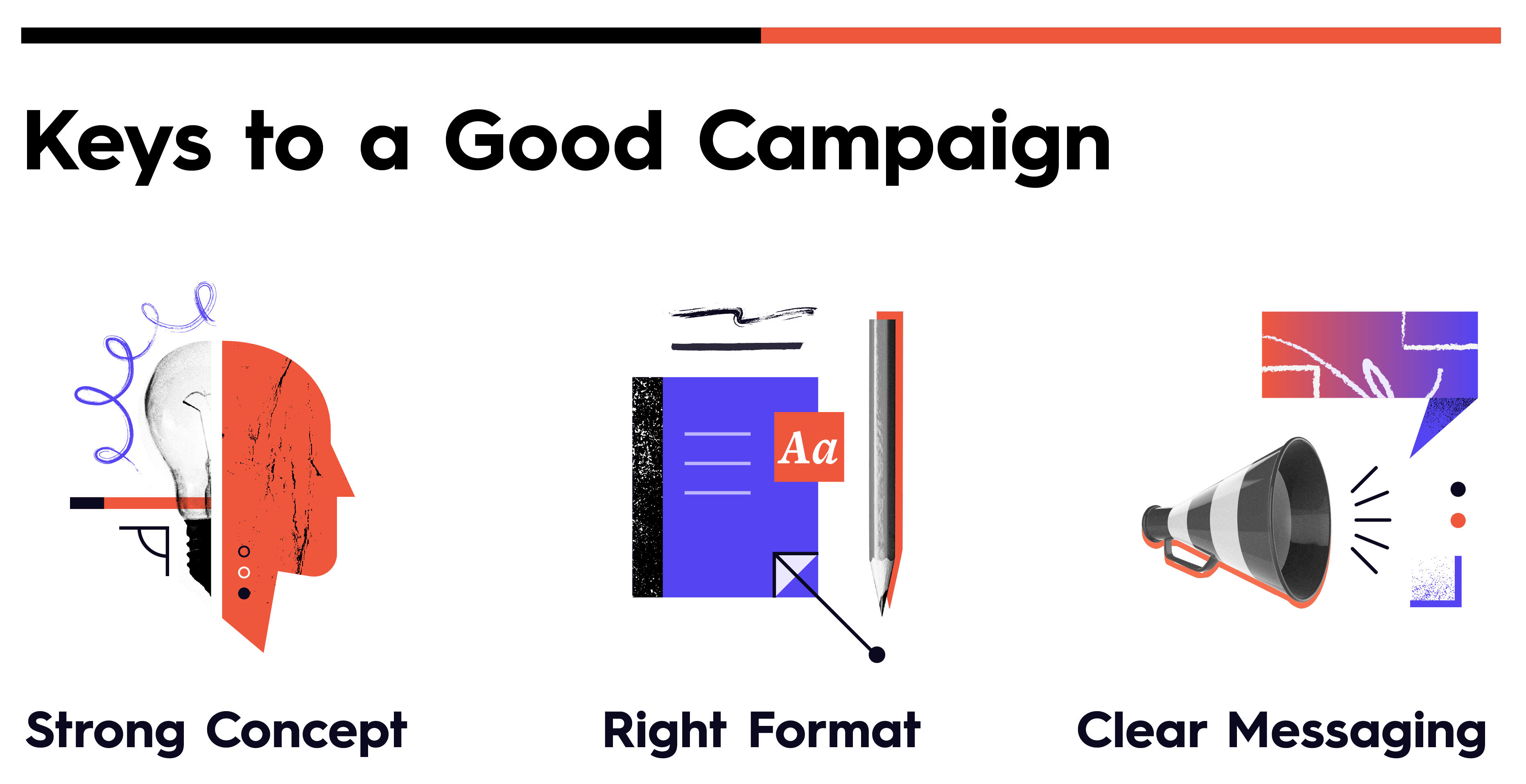
During this step, you’ll craft campaigns mapped to the content planning work you’ve done so far. While you may prioritize one type of content category over the other (e.b., Educational content vs.Talent content), you need to know how each will play a role in your strategy.
How to Do It
Use our Marketing Campaign Template to craft campaigns that support your larger goals. A few things to keep in mind as you work through the template:
- Brainstorm the right concepts. Good content marketing isn’t about creating content; it’s about providing value. Focus on your personas and give them what they want, whether it’s education, entertainment, or inspiration. (Here are 7 ways to know if your ideas provide true value.) If you’re hitting a creative wall, try these 9 content marketing prompts to get your creative wheels turning.
- Know your messaging. Identify your key talking points to ensure you’re telling a consistent story across all content. (Use our messaging framework if you need to do some work there.)
- Choose the right format. The medium is just as important as the message. Check out our Guide to Visual Content Marketing to learn more about the benefits of each type of content format.
- Identify your keywords. What are your top keyword opportunities? How will you optimize content around keywords? Are your publishing platforms optimized for SEO? For more, see our Guide to Find the Right Keywords for your content strategy.
- Identify your budget. To determine how much programs will cost, we typically work with one of two numbers: quarterly or annual budget, or a quantified marketing goal such as “2,000 leads this year.” You can use logic and formulas to work backward from a marketing goal and create an estimated budget.
- Don’t come on too strong in your content! Know the difference between content marketing and sales material, and make sure you’re sending the right message at the right stage of the customer journey.
For more tips, see our Guide to Run a Successful Marketing Campaign, and find out how to make the most of your content by using a divisible content strategy.
Step 13: Build Your Editorial Calendar
Purpose: Maintain a steady publishing cadence.
Publishing consistency is one of the keys to a successful content strategy, so it’s important to keep your team on track with an organized editorial calendar. Whereas your content pipeline is a larger overview, an editorial calendar is a granular view of your content. Whether you publish daily, weekly, or monthly, using a calendar will ensure you can budget in the right amount of time and, most importantly, stick to your deadlines.
How to Do It
There are all sorts of tools you can use to create your editorial calendar: Google Sheets, CoSchedule, etc. If you’re just starting, use our Editorial Calendar Template to start scheduling your content.
- Identify your publishing cadence. Will you publish daily, weekly, or monthly? We find it helpful to schedule content by month. You don’t have to be overly prescriptive. (Again, a good content strategy is flexible and adaptable based on a brand’s changing needs.) But it helps to understand what your volume and cadence will look like.
- Include holidays and social events. These are important to note ahead of time as well, as they can interrupt publishing (e.g., Christmas) or inspire content ideas or brand tie-ins (e.g., the Oscars). Bookmark a tool like Forekast, an online calendar that compiles every major holiday and event that may be relevant to your content calendar. If your industry experiences seasonal trends (e.g., retail), make sure those changes are accounted for too.
You always want to brainstorm ideas far ahead of time so you don’t get stuck in reactive mode throughout the year.
Questions to Ask
- How often will you publish?
- How much content will you publish?
- How will you organize content for campaigns?
- How will you determine how to publish and promote each piece of content?
- Who will own each kind of content?
- What formats will you create?
- Is your calendar aligned to the “life calendar” of your target personas?
Once you’re ready to start creating your content, use the Content Brief Template to kick every project off. For more tips, see our guide to create an editorial calendar.
How to Put Your Content Strategy to Work
Congrats. Thanks to all the work you’ve done, you can proceed confidently into content creation and do it better than ever. As you put this content strategy to work, there are a few more ways to make sure you succeed from the jump.
- Optimize your content creation process. There are a ton of moving parts when it comes to creating stellar content, and it can get more complicated depending on the type of content you’re creating. Follow our Guide to Master Content Creation, which features our best tips on brainstorming, copywriting, designing, publishing, and more.
- Follow best practices. There’s good content, and then there’s great content. No matter what you’re creating, there are plenty of small things you can do to enhance your viewer’s experience. See our tips to improve your copywriting, design, infographics, and data visualization.
- Create appropriate timelines. Sticking to your deadlines is crucial to keep your content calendar full. Give yourself enough time, especially if you’re undertaking more labor-intensive content like interactives or video. Most importantly, get approvals at every stage of content production. This prevents you from having to make last-minute edits that will throw things off.
- Craft an effective distribution strategy. To maximize your reach, follow our Guide to Craft a Distribution Strategy That Works.
- Find the right vendors. You may need to outsource some work or bring in an extra hand to complete a project. If so, do your due diligence to bring in the right creative partners. Start with our tips to find the right creative agency.
You can also check out our tips to decide whether you should create content in-house or outsource it.
Above all, remember that content strategy is part art, part science. The more effectively you track your results and gather insights from your data, the better you can refine your strategy. Even if you’re not as successful as you hope to be off the bat, you’ll learn more, get better, and adapt quicker, improving your results over time.
The truth is your strategy isn’t set in stone. A good strategy is a blueprint, not a permanent document. Your brand’s goals will shift and change over time, and your content strategy will evolve accordingly. For this reason, we recommend revisiting your strategy quarterly—or when significant events or changes occur that may affect it.

We know, of course, that everyone gets stuck from time to time. If you don’t have the resources, patience, or energy to tackle content strategy on your own, we’re happy to chat about how we can help you dig deep, uncover your most interesting stories, and turn them into a smart content strategy that works.





Thanks so much for mentioning Forekast! We’re honored.
Thanks for making such a handy tool 🙂
So literally had to call to VOICE the awesomeness of this and your other resources! It’s times like this I wish Tinkerbell was real because I would certainly have her bipity-bopity-boo y’all to work on my brands! (As I just finished typing I realized that wasn’t Tinkerbell but the Fairy Godmother–but my sentiment is still the same)! Thanks!
You made our day! Thanks so much.
WOW. This is so thorough, well-executed, concise, and generous that it’s left me speechless. Thank you for sharing your knowledge and for the work it took to create this. Much appreciated.
Thanks, Roxana! We hope it gives everyone some clarity.